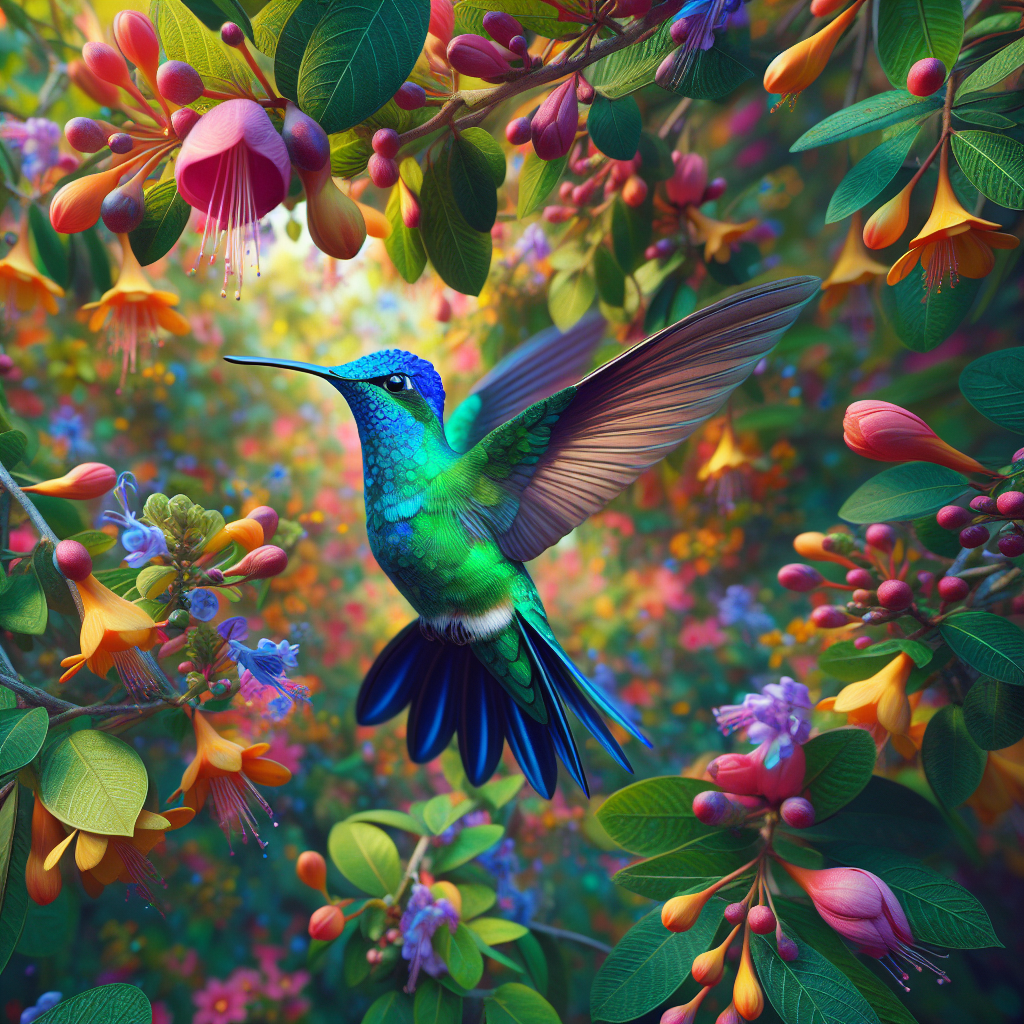The Enigmatic Blue-Capped Puffleg: A Jewel of the Andes
Imagine a tiny bird, no bigger than a teacup, shimmering with iridescent colors as it flits through the misty cloud forests of the Andes. This is the blue-capped puffleg, a rare and captivating hummingbird species that calls the high-altitude regions of Colombia and Ecuador its home. First described in the mid-19th century, this elusive bird is known for its striking blue cap and fluffy white leg puffs, which give it its whimsical name. The blue-capped puffleg thrives in the dense, humid forests where it feeds on nectar and insects, playing a crucial role in pollination. However, its existence is threatened by habitat loss and climate change, raising concerns about its future.
The blue-capped puffleg is a marvel of nature, with its vibrant plumage and delicate features. Its habitat, the cloud forests, are unique ecosystems characterized by persistent cloud cover at the canopy level. These forests are rich in biodiversity and are vital for the survival of many species, including the blue-capped puffleg. Unfortunately, deforestation for agriculture and urban development is encroaching on these habitats, leading to a decline in the population of this beautiful bird. Conservationists are working tirelessly to protect these areas, but the challenges are immense.
Climate change adds another layer of complexity to the survival of the blue-capped puffleg. As temperatures rise and weather patterns shift, the delicate balance of the cloud forests is disrupted. This can lead to changes in the availability of food sources and suitable nesting sites for the puffleg. The bird's reliance on specific plants for nectar makes it particularly vulnerable to these changes. Efforts to mitigate climate change and preserve natural habitats are crucial to ensuring the survival of this species.
While the plight of the blue-capped puffleg is concerning, it also highlights the broader issue of biodiversity loss. The interconnectedness of ecosystems means that the decline of one species can have ripple effects throughout the environment. Protecting the blue-capped puffleg is not just about saving a single bird; it's about preserving the intricate web of life that sustains us all. This requires a concerted effort from governments, conservation organizations, and individuals to prioritize environmental protection and sustainable practices.
There are those who argue that economic development should take precedence over conservation efforts. They believe that the needs of human populations, such as food production and infrastructure development, should be prioritized. While these needs are undeniably important, it is essential to find a balance that allows for both human progress and the preservation of our natural world. Sustainable development practices can help achieve this balance, ensuring that we do not sacrifice the environment for short-term gains.
The blue-capped puffleg serves as a reminder of the beauty and fragility of our planet's ecosystems. Its survival depends on our ability to recognize the value of biodiversity and take action to protect it. By supporting conservation efforts and advocating for policies that address climate change, we can help ensure that future generations will have the opportunity to marvel at the wonders of nature, just as we do today. The blue-capped puffleg may be small, but its significance is immense, symbolizing the urgent need for environmental stewardship in an ever-changing world.

